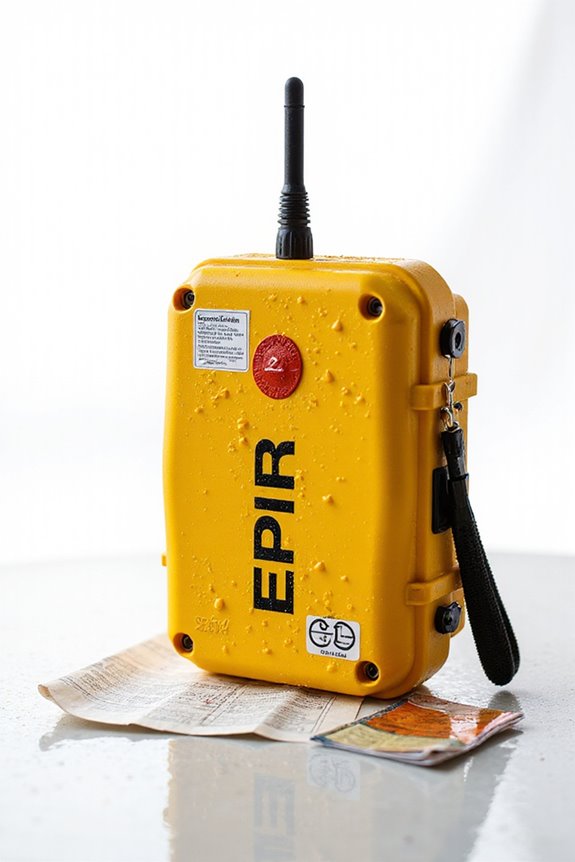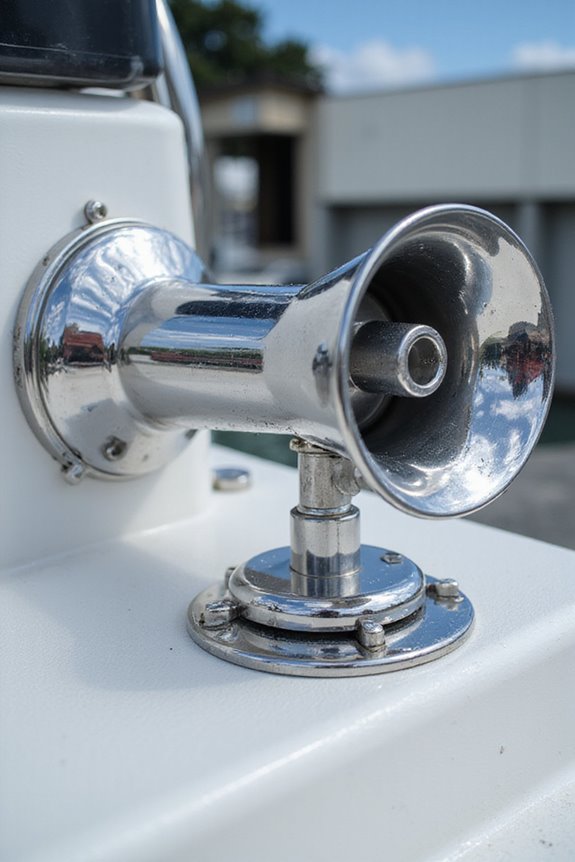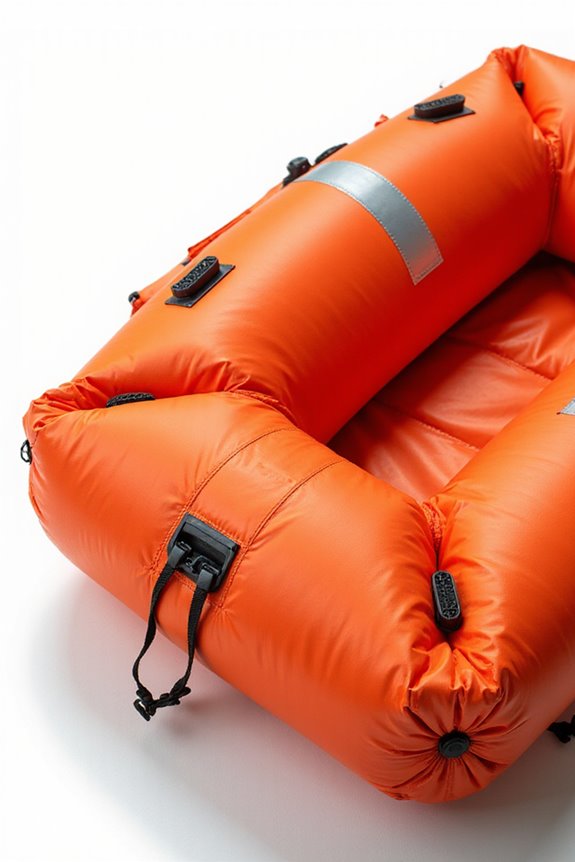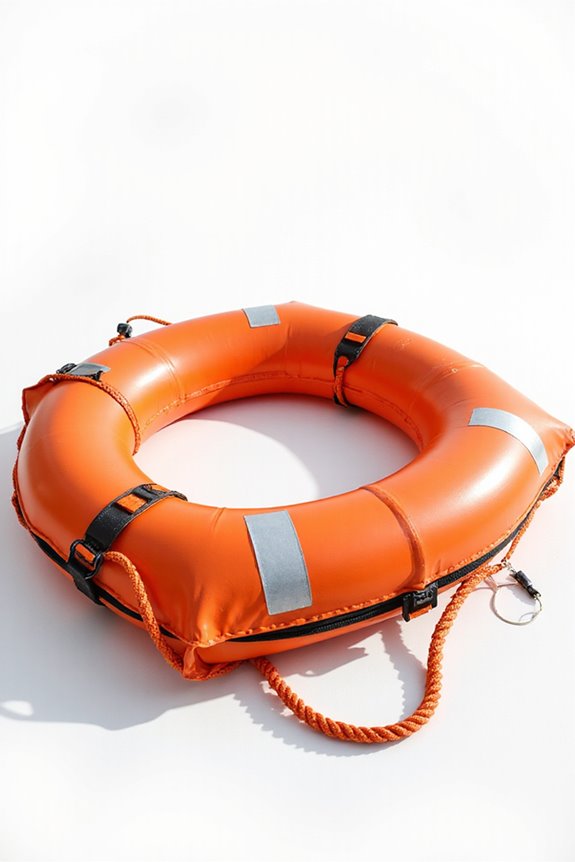When it comes to flare gun visibility in boating safety, it depends on flare type, elevation, and weather. Parachute and rocket flares shoot high for maximum reach, while hand-held ones burn bright nearby. Ever wonder why fog or rain make them harder to see? It’s all about light scattering and background contrast. Plus, pyrotechnic flares last minutes, but newer LED versions can shine for hours safely. Curious about getting the best signal when it counts? Keep exploring what makes flares truly effective.
Key Takeaways
- Flare visibility range depends on elevation; higher altitude flares like parachute or aerial rockets are sighted from greater distances.
- Brightness measured in candela directly affects how far a flare’s light can be seen in marine environments.
- Weather conditions such as fog, rain, and haze significantly reduce flare visibility range and effectiveness.
- Positioning of both flare and observer, including vessel height, influences how far the signal can be detected.
- Using Coast Guard-approved and fresh pyrotechnic flares ensures maximum visibility and compliance with boating safety rules.
Types of Flares Used in Boating Safety
While we might hope never to need them, understanding the types of flares used in boating safety is essential before heading out on the water. So, what flare types should we pack? There are parachute flares, which shoot high and descend slowly—great for nighttime visibility lasting several minutes. Hand-held flares burn bright red flames for one to two minutes, working both day and night. Meteor and aerial rocket flares also shoot upward but differ slightly in burn time and brightness, alerting nearby vessels or planes. Then we have smoke signals, which emit orange smoke mostly useful by day. Knowing each flare function helps us pick the right signals for any situation. Plus, all flares must be Coast Guard-approved and fresh—expired ones won’t save the day, no matter how hopeful we are.
Factors Influencing Flare Visibility Range
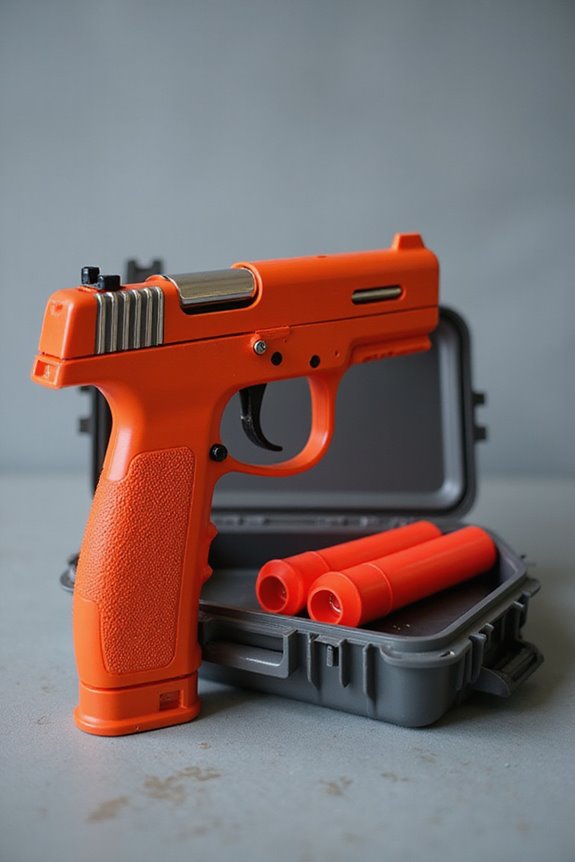
Even though flares might seem straightforward—light ’em up and hope for the best—there’s actually quite a bit that influences how far their bright signals can travel. For starters, flare elevation plays a huge role. The higher a flare shoots, often up to 1,000 feet, the farther away it can be spotted, since it clears more of the earth’s curve. Then there’s signal brightness, measured in candela—brighter flares punch through darkness better, making them easier to detect from miles away. But weather can be a real party pooper; fog, rain, or haze scatter that brilliance, shrinking your visible range dramatically. Plus, where you and the flare are positioned—whether on a high deck or near sea level—alters visibility. So, while firing a flare is simple, these factors really shape how well it actually works.
Comparison of Pyrotechnic and LED Flare Signals
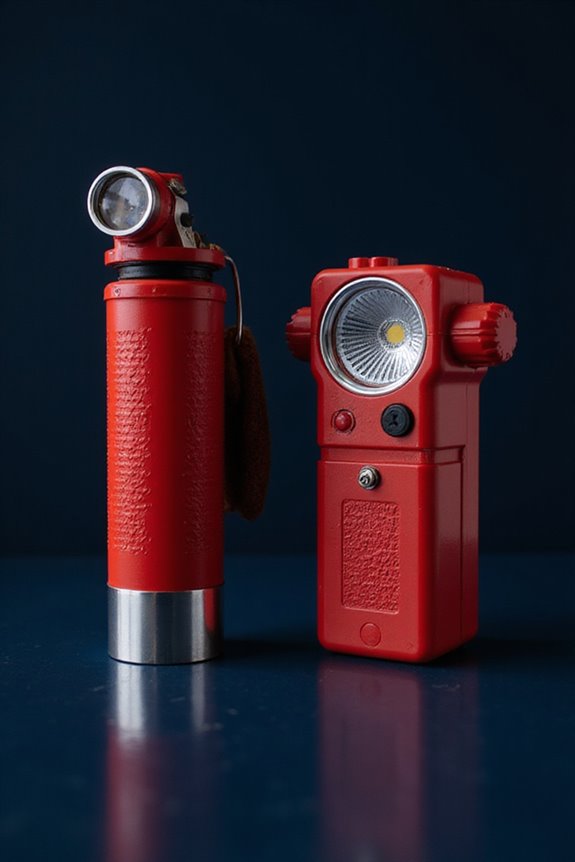
Since staying visible in an emergency is what really counts, let’s dig into how pyrotechnic and LED flares stack up against each other. Pyrotechnic flares offer bright, short bursts of light—they’re classic but come with flare signal performance limits, lasting about a minute and needing careful handling due to heat and sparks. LED flares, on the other hand, shine safely for hours, some visible up to 10 nautical miles, and score high on signal safety considerations since they’re easier to store and dispose of. Sure, pyrotechnics have that instant wow factor, but LEDs win on longevity, cost, and eco-friendliness. So, which do we choose? Honestly, blending tradition with tech seems smart, especially as LED advancements promise safer, longer-lasting signals. What’s your take on this bright debate?
Weather Impact on Flare Signal Effectiveness
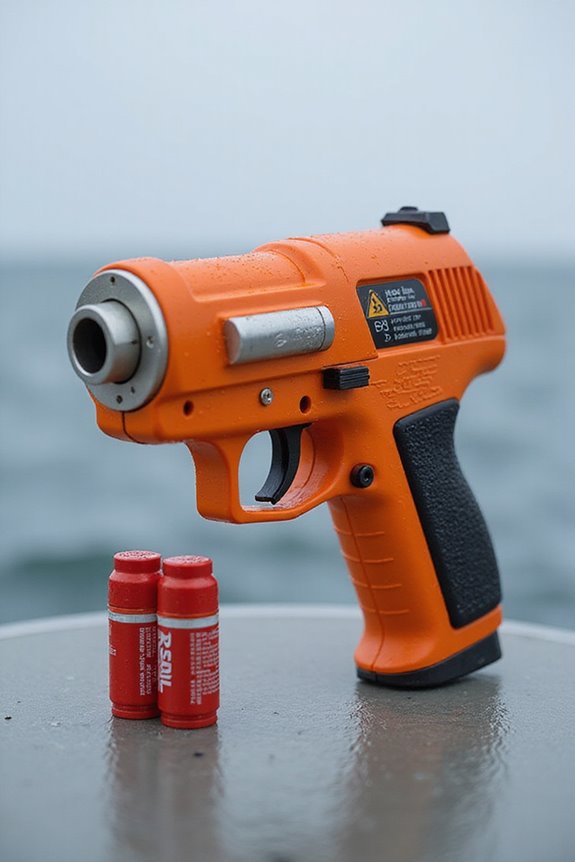
Choosing the right flare type is just one part of staying visible at sea—weather plays a huge role in how well your signal actually shows up. Ever wondered why a flare might seem bright one moment and nearly invisible the next? Fog, rain, and snow can seriously cut down flare visibility by scattering or blocking the light. Even haze can make your message blend into the background, especially during daylight. And let’s not forget, smoke flares work wonders for daytime visibility, but strong wind can quickly blow that signal away. At night, pyrotechnic flares reflect off the water, boosting their reach—though rough seas can hide them behind waves. So, keep an eye on weather conditions and pick your flare smartly; it’s key to getting seen when it counts.
Legal Requirements for Carrying Flares
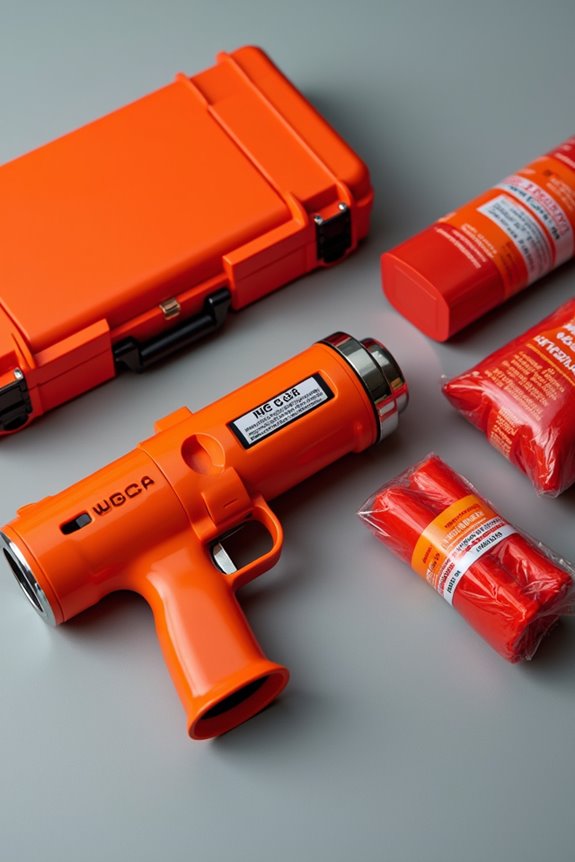
When it comes to carrying flares on your boat, there are some pretty clear rules set by the U.S. Coast Guard. These flare regulations guarantee we’re all prepared if trouble strikes. For instance, boats 16 feet or longer must carry both day and night visual distress signals—think handled flares, orange smoke, or approved electronic versions. Smaller boats have lighter requirements, but it’s smart to double-check what fits your vessel. And hey, ever had a safety inspection? Those moments aren’t just busywork—they help confirm we’re all boating responsibly with current, USCG-approved flares aboard. Remember, flares must be serviceable and within their expiration date; expired ones are just colorful paperweights. Staying on top of these legal obligations not only keeps us safe but also helps avoid fines that no one wants swimming into their day.
Best Practices for Using Flares in Emergencies
There are a few key things we all should know before using flares in an emergency—because when the pressure’s on, fumbling with pyrotechnics isn’t exactly ideal. First off, flare training isn’t just for the pros; it’s an essential part of emergency preparation for all of us who hit the water. Knowing how to handle flares—like facing downwind to avoid burns, wearing gloves, and bracing yourself properly—can make a real difference. We should also remember to check expiration dates and store flares where they’re easy to grab. When firing, holding the flare at arm’s length and waving it slowly boosts visibility, vital for getting noticed. Ever thought about practicing flare use before it’s necessary? Trust me, flare training exercises keep everyone confident and safe.
Innovations Enhancing Flare Visibility and Usability
While traditional flare guns have served boaters well for decades, recent innovations have really boosted how visible and user-friendly these lifesaving tools are. Thanks to LED technology, flares now shine brighter and last longer—some even glow for over 20 hours! Plus, with multi-color signaling using red-orange and cyan LEDs, the distress signals stand out clearly against the water, making it easier for rescuers to spot you. Have you noticed that some modern flares flash classic SOS patterns in these colors? It’s not just for show; it follows international Morse code standards. What’s more, full 360° illumination and self-righting designs mean no more fiddling to keep your flare upright. All of this adds up to smarter, safer, and more effective emergency signaling that feels like having a trusty lifeline onboard.
Frequently Asked Questions
How Often Should I Replace the Flares on My Boat?
Like clockwork, just as seasons change, we replace our flares every three boating seasons to guarantee signal effectiveness and avoid flare expiration. Staying current means we stay safe and compliant, sharing that crucial bond out on the water.
Can Flare Signals Interfere With Marine Wildlife?
It is understood the flare impact on wildlife behavior can be concerning. That’s why we should use flares responsibly, avoiding protected areas to minimize disturbance, ensuring our safety practices align with preserving marine life for everyone who loves the water.
What Is the Safest Way to Dispose of Expired Flares?
For flare disposal, friends, finding safe methods means first following federal laws. We should seek local hazardous waste facilities or community collection sites, never dumping flares illegally. Together, we’re protecting people, places, and preserving precious waters.
Are There Alternatives to Flares for Signaling in Cold Climates?
We’re glad you asked! Besides flares, we can rely on signal mirrors to reflect sunlight and emergency whistles to attract attention. These tools help keep us safe and connected, especially in cold climates where visibility’s tricky.
How Do Batteries Affect LED Flare Performance Over Time?
While LED performance starts bright, battery lifespan naturally declines, impacting light output over time. Together, we can guarantee our LED flares stay reliable by minding battery health, so we’re always ready and visible when it counts.


